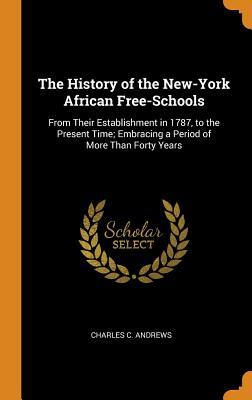Read Online The History of the New-York African Free-Schools: From Their Establishment in 1787, to the Present Time; Embracing a Period of More Than Forty Years - Charles C Andrews | PDF
Related searches:
The Dakota New York History Architectural Digest
The History of the New-York African Free-Schools: From Their Establishment in 1787, to the Present Time; Embracing a Period of More Than Forty Years
12 Things to See at the New Smithsonian Museum of African-American History and Culture Travel + Leisure
The history of the New-York African free-schools, from their
The History of the New-York African Free-Schools, from Their
The Story Of A Memorial: The African Burial Ground In New York
A Brief History of Slavery That You Didn - The New York Times
The Controversial History of Levittown - Untapped New York
African American The New York State Museum
Black Capital: Harlem in the 1920s The New York State Museum
Black History Page – Curriculum Support – The New York Institute
NY State Senate Bill S1135A - The New York State Senate
The History of Timbuctoo: An African-American Hamlet in the
The history of the New-York African free-school, from their
The History of the New-York African Free-schools: From Their
How Negro History Week Became Black - The New York Times
The incredible life of David Carll and his - ABC7 New York
Records from colonial new york indicate the city was a major hub for the slave trade in north america. Although the city's slave population ranged between 15 to 20 percent, most slaves purchased through the new york market were r e directed to other slave holding territories in the american south. Documents also note that the new york market sometimes received shipments of african children under the age of thirteen.
Stunned by the riots, the abolitionist movement in new york city revived itself slowly, and in march 1864, less than a year after the draft riots, new york city saw its first all-black volunteer.
The new york state museum's african american history collection covers the 18th through the 21st centuries.
This exhibition celebrates the rich and diverse culture of harlem, new york. In the 1920s and 1930s, harlem became a symbol of the african american struggle.
The emancipated african-americans established communities in the new york city area, including seneca village in what is now central park of manhattan and sandy ground on staten island, and weeksville in brooklyn. The city was a nerve center for the abolitionist movement in the united states.
It was also, paradoxically, for more than two centuries, the capital of american slavery. As many as 20 percent of colonial new yorkers were enslaved africans.
The first enslaved african arrived in new amsterdam in 1625, as laborers for the dutch west india company (wic). The wic, whose profits were chiefly from commerce reliant upon slave labor (and later the slave trade), was then pursuing its interest in the fur trade, which had been cultivated by early traders like rodrigues.
Suffrage for african american long islanders was introduced in 1821. The new constitution of the state of new york was enacted in 1821.
The new york black yankees was a baseball team active in the negro leagues from 1931 to 1948. For most of their career the black yankees played their home games at yankee stadium in the bronx, new york, although the 1938 season saw the team playing their home games at new york’s triborough stadium.
This makes leslie alexander's tightly knit narrative of the development of two broad african american political identities an important contribution to the growing.
Years ago, yale university released a free online course titled african american history: from emancipation to the present, which looks at the black experience in america from 1863 to today.
Perhaps 95% of africans in new york city from the late 17th through the 18th centuries were enslaved to do the work of building the city.
Discover the people and events that shaped african american history, from slavery and abolitionism to the harlem renaissance and civil rights movement.
The history of the new-york african free-school, from their establishment in 1787, to the present time; embracing a period of more than forty years: also a brief account of the succesful labors of the new-york manumission society written by andrews as the principal of the african free school.
In the early 1900s, a few middle-class black families from another neighborhood known as black bohemia moved to harlem, and other black families followed.
New york city has perhaps more history than any other in the nation. But how much nyc history do you really know? here are 10 tidbits that few have heard.
View student reviews, rankings, reputation for the online aa in african american history from lansing community college the online associate in arts in african american history degree program from lansing community college provides students.
Few are aware of the long history of slavery in the northern states, and particularly new york city. My first book, in the shadow of slavery: african americans in new york city, 1626-1863 (university of chicago press, 2002) calls attention to the ways in which new york city was dependent on slavery for two centuries--from 1626 to 1827; and the ways in which that history, as well as the continuation of southern slavery until the civil war, affected the lives of new york city's african-americans.
African american history is american history, so this commonsense bill is a concerted effort to restore the intricate history and contribution made by african.
Oyster bay, new york (wabc) -- interwoven in the history of oyster bay, ny, a hamlet on the north shore of long island, are untold stories of african americans that have played significant roles.
(today, the organization is known as the association for the study of african american life and history, or asalh. ) in 1916, the association established the journal of negro history, the first.

Post Your Comments: